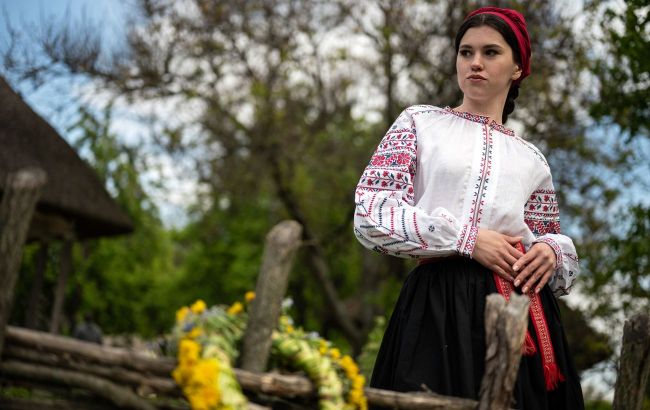Vyshyvanka, kraika and coral necklaces: Hidden magic of traditional Ukrainian clothing
 What magical meaning each element of Ukrainian clothing had (photo: Getty Images)
What magical meaning each element of Ukrainian clothing had (photo: Getty Images)
Ukrainian traditional clothing is not just a beautiful embroidered shirt or an old-style costume. Every thread and every ornament had its own meaning: they protected against evil forces, showed social status, and served as a language understood by our ancestors. Clothing not only adorned but also preserved memory, history, and faith. How can we read the Ukrainian costume, and what magical meaning did each element have?
Clothing as protection
Our ancestors believed that clothing could protect not only from cold but also from evil forces.
That is why embroidery was placed on the areas considered vulnerable, such as the chest, shoulders, sleeves, and hem of the shirt.
Every ornament carried its own meaning: wavy lines symbolized water, rhombuses stood for fertility, and crosses represented the sun and cosmic order.
Embroidered shirt is not just a shirt
Men's and women's embroidered shirts differed in cut and meaning. Patterns were passed from generation to generation.
Red meant life and energy, black meant the earth and the memory of ancestors, and blue meant water and peace. The ornament was both a talisman and a passport at the same time.
 Each ornament contained a person's "passport" (photo: Getty Images)
Each ornament contained a person's "passport" (photo: Getty Images)
Belts, zapaskas, and plakhtas
The belt (kraika, towel-belt) was considered a symbol of the cosmos and protected a person by enclosing their energy space.
Women wore plakhtas or zapaskas, which were woven skirts that could reveal their age and social status. Colors and patterns reflected mood, events, and sometimes even the state of the soul.
Headwear: Wreaths, namitkas, kerchiefs
Girls wore wreaths of fresh or artificial flowers, a symbol of purity and youth.
Married women always covered their heads with a namitkas or kerchief, which marked their new status.
Men wore different hats depending on the region, from sheepskin to linen summer hats. Headwear often indicated local identity.
Jewelry: Power and status
Coral necklaces, ducats, silver earrings, and rings were not just adornments. Each element had a magical function: protection from the evil eye, a symbol of prosperity, or even a statement of status. Wealthy families could afford dozens of coral necklaces, while the poor had to limit themselves to just a few.
 Each element of the Ukrainian costume has its own sacred meaning (photo: Getty Images)
Each element of the Ukrainian costume has its own sacred meaning (photo: Getty Images)
Footwear and outerwear
Shoes (postoly, lychaky, or boots) depended on the region and financial standing. Outerwear (svyty, sheepskin coats, or serdaks) was not only functional but also a marker of status.
In the Carpathians, serdaks were decorated with embroidery and beads, turning them into true works of art.
Cultural code in every stitch
Ukrainian clothing is not just about aesthetics but a coded text. It combines pre-Christian beliefs, Christian symbols, and centuries of history. Understanding this language allows us to feel not only the beauty of tradition but also the depth of our culture.
Sources: National Center of Folk Culture "Ivan Honchar Museum," Ukrainian Institute, Encyclopedia of Ukrainian Ethnology

